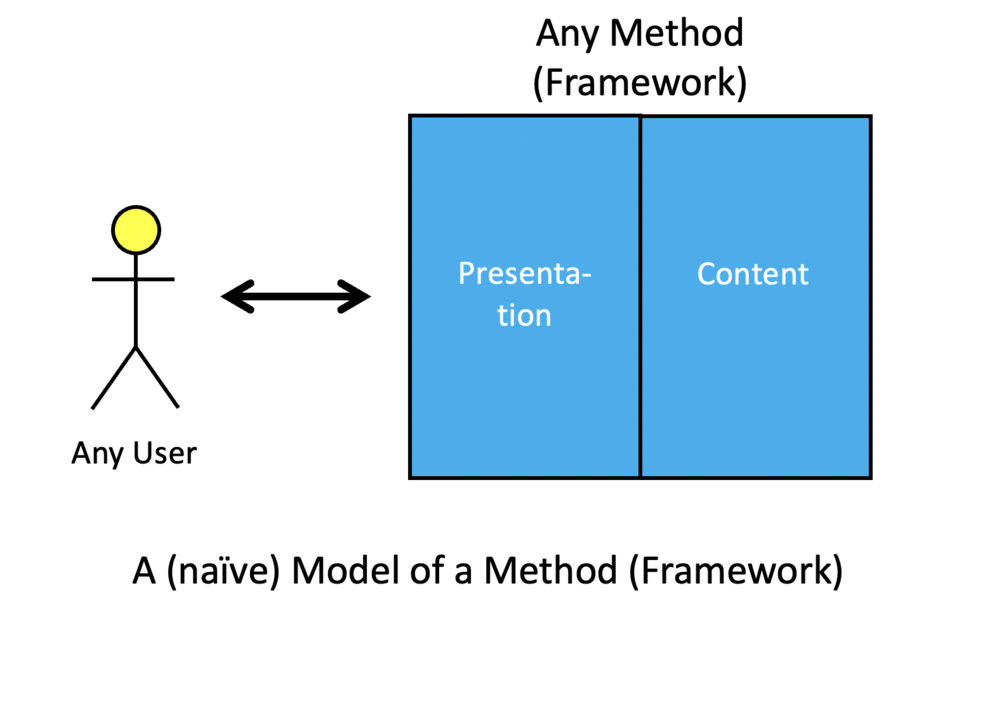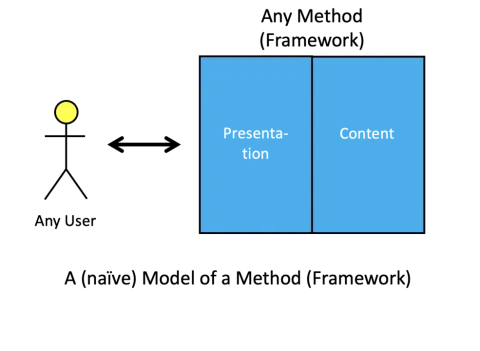In a recent LinkedIn article by Dr Ivar Jacobson, (replicated here to raise visibility), Ivar explores how the Essence standard can be used powerfully to make even existing methods better so that teams and organizations can more easily learn and consume them.
Article:

All methods, whether public or in-house, have two perspectives:
- a content perspective, and
- a presentation perspective.
You could also call it a syntax perspective and a semantic perspective.
Let’s discuss what we mean by that. First, what is a method here? DA, SAFe, LeSS, The Spotify Model, are all methods made publicly available. Also, ways of working developed inside an organization are methods – in-house methods. For simplicity, we are using the term ‘method’ to encompass a wide range of what others may call frameworks, processes, approaches, etc.
The content perspective is about the ideas such as principles, practices or patterns that a method promotes. For instance, XP has contributed us with short iterations and Pair Programming and SAFe has contributed the concept of Release Trains and Planning Increments. Content is what the famous methods have excelled with.
The presentation perspective is about the user experience that a method provides to the users when learning and working with the method. For instance, the user experience may be training with a huge number of slides, studying web pages, reading papers or books, looking at videos, or other passive ways of learning. Or it can be more interactive. Given the large number of users involved in adopting and continuously improving a method, it is of course very important to provide effective user experiences. See “Essence is a Game Changer”.
One of the many use cases of Essence is to provide an effective user experience to the users of a method. These are primarily the Team, the Team of Teams, the Organization, but many more such as the Practitioner (the individual), the Method Champion, the Coach, the Development Lead, the Executive, the Program Management Office.
The user experiences provided by the existing famous methods are passive and may be said to be outdated. They often focus primarily on the user learning the method for the first time and assume that, once taught, the user is equipped to successfully use the method.
These user experiences were probably something the creator just came up with early on when making her/his method public. Creating a great user experience is usually not at the top of the mind of methodologists – they care more about content than presentation. The consequence is that the presentation perspective is usually old-fashioned, not inspirational, maybe even boring.
Thus, the user experiences need to be refreshed and modern. Voila! Essence helps here. This is one area where Essence and its use cases is a game changer. Not just books, web sites, videos and other passive media but a large number of serious, interactive games help the users to get started, and they support them throughout their daily work. These games have similarities with many of the good games that have been used in the past, but there is a significant difference. They all rely on an underlying platform Essence, so changes in one game may instantly also result in changes in other games to keep the whole set of games in a kind of sync. This must be experienced, not just talked about.
Moreover, methods are not just supposed to be learned, they are of course also supposed to be applied to deliver results. This is where we this far have failed to help with anything else than consultancy. The problem is that there are not so many good consultants. We call this gap between learning and delivery, the Achilles’ Heel of method adoptions. See “The Craziest Things with Methods and Frameworks” chapter 5. Essence bridge that gap in a simple but efficient way.

